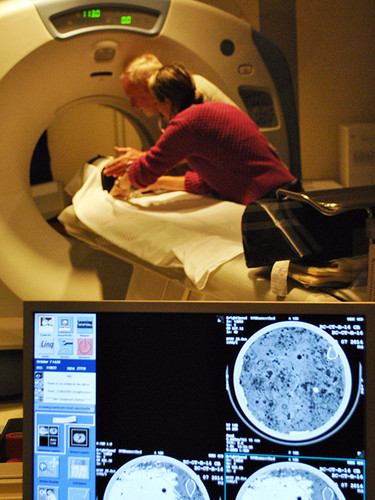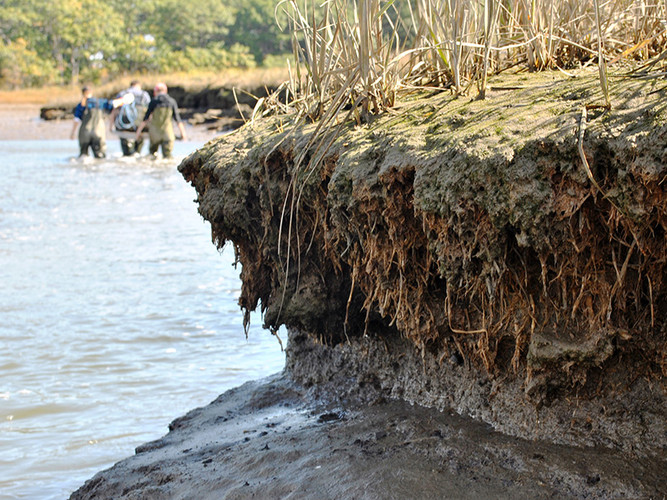The Wrack
The Wrack is the Wells Reserve blog, our collective logbook on the web.
The Wrack is the Wells Reserve blog, our collective logbook on the web.
Scientists at the Wells National Estuarine Research Reserve have discovered how invasive green crabs are damaging salt marshes along the Maine coast. By measuring the strength of peat in three salt marshes, and by using CT scanning to inspect peat samples drawn from those marshes, the researchers have shown that green crab burrowing activity is weakening salt marsh creek banks, causing them to erode.
The research reserve, which studied salt marshes in Wells, Yarmouth, and Damariscotta over two years, reported its findings to the Maine Outdoor Heritage Fund.
 This was the first time computer-aided tomography (CT) has been used to study geologic cores taken from Maine salt marshes. Southern Maine Health Care in Biddeford performed the CT scanning, which allowed scientists to look inside cylinders of salt marsh peat without disturbing their structure.
This was the first time computer-aided tomography (CT) has been used to study geologic cores taken from Maine salt marshes. Southern Maine Health Care in Biddeford performed the CT scanning, which allowed scientists to look inside cylinders of salt marsh peat without disturbing their structure.
“The scans clearly showed green crab burrows running through the peat cores,” said project manager Jacob Aman. “That burrowing activity damages the roots and rhizomes of grasses that would otherwise hold the salt marsh together. Sites with more green crabs had less living biomass in the upper marsh peat.”
Aman said torque measurements taken within the salt marshes showed that creek banks impacted by green crabs were more erodible than vegetated creek banks.
“SMHC was pleased to partner with the Wells Reserve on the green crab project,” said SMHC VP of Ancillary Services Steve Keegan. “It was an unique experience for the CT technicians to use the technology in this way, and to see firsthand the scientists’ excitement when the scans validated their suspicions about the extent of the green crab invasion in the marsh samples.”
The European green crab has become abundant in Maine since it arrived on the coast during the 19th century. In some areas, green crab populations threaten valuable habitats such as soft-shell clam flats, eelgrass beds, and salt marshes.
Salt marshes provide nursery habitat for shellfish and finfish and essential habitat for migratory birds. They improve water quality by intercepting stormwater run-off while protecting coastal areas from erosion caused by strong storms.
# # #
